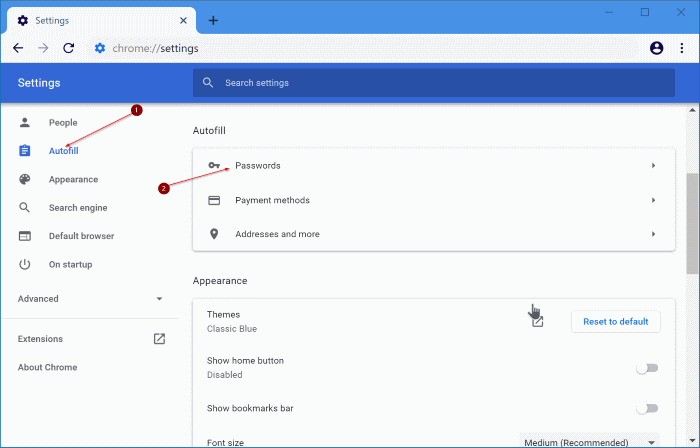
Export passwords saved in Chrome to a CSV file Google has removed the experimental Password Import flag from Chrome (at least from Chrome 78 and 79), which allowed us to import passwords from a CSV file. If you are wondering how to import passwords into Chrome from the CSV file, well, there is no definite way as of now. The CSV file containing Chrome passwords can be opened with the built-in Notepad as well, but the data is not formatted. Luckily, exporting passwords saved in Chrome is straight-forward and can be done without the help of third-party software.Ĭhrome lets you export saved passwords to a CSV file that you can open with Office Excel, LibreOffice Calc (free), or programs that support the CSV file type. Users who want to transfer passwords from an old computer to a new computer might also want to export passwords to a file. For instance, you might want to export Chrome passwords to a file before reinstalling the browser or before reinstalling the Windows 10 operating system. If you have not opted to sync Chrome passwords, you might want to export passwords saved in the Chrome browser so that you can keep a backup of your web credentials. Any item Enpass couldn't categorize will appear under Uncategorized in the sidebar.Users who have opted to sync passwords (requires you to sign in with a Google account) don’t need to export or backup passwords saved in the Chrome browser as saved passwords are stored in the cloud. Imported items are categorized in Enpass based on available data. Click Continue, and after the import is complete, click Done.(The Primary vault is selected by default.) If you have multiple Enpass vaults, select the vault into which you want the data imported.csv file on your computer, and click Continue. Under Select File, click the folder icon.From the File menu in Enpass, select Import, then select Chrome Browser.

In Chrome, go to Settings > Autofill > Passwords, tap the ⋮ icon next to Saved Passwords, and select Export Passwords. To import logins and password from Chrome, the data must be exported first in an unencrypted format supported by Enpass, then imported using the desktop version of Enpass.


 0 kommentar(er)
0 kommentar(er)
